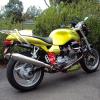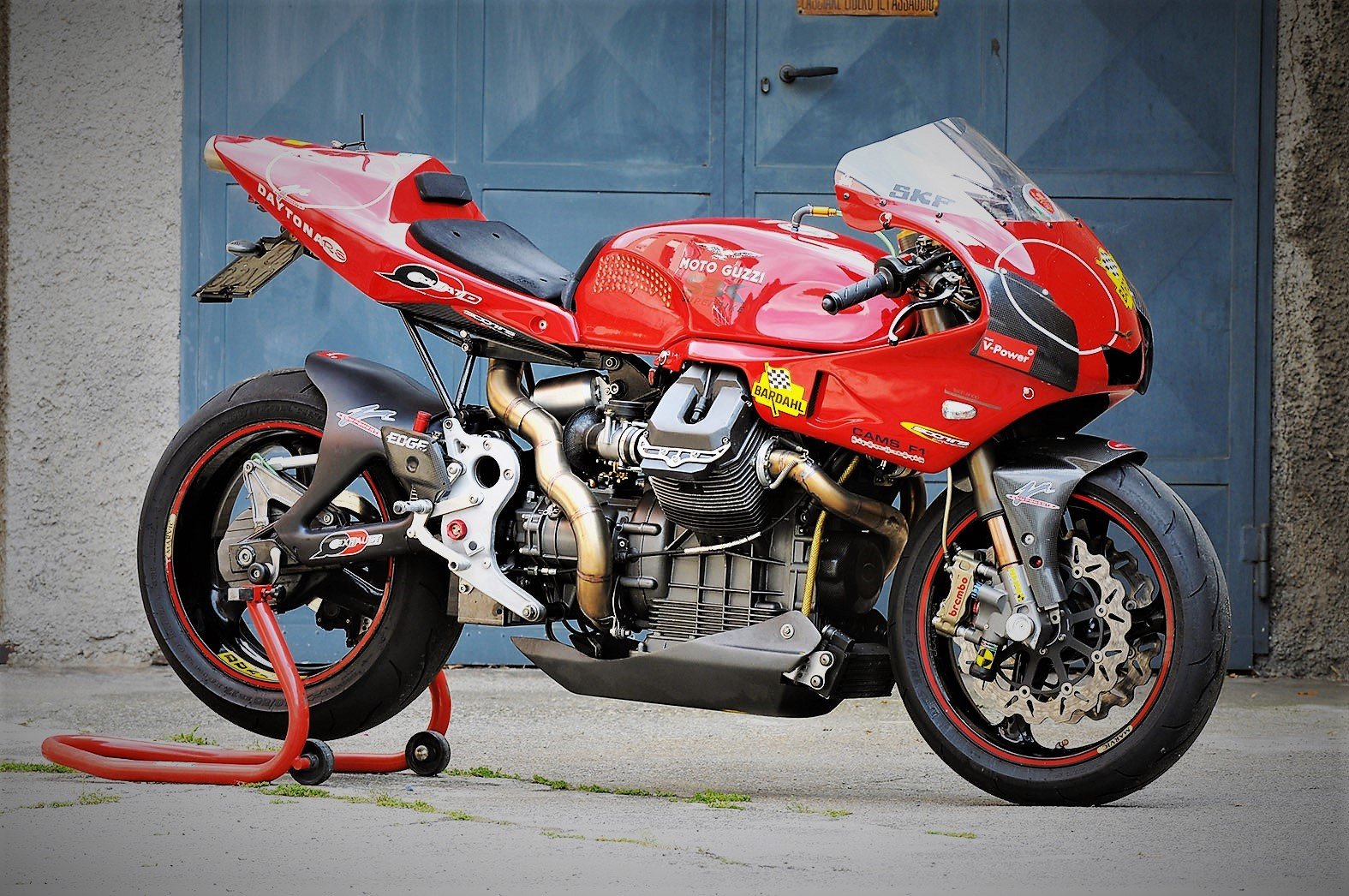-
Posts
4,554 -
Joined
-
Last visited
-
Days Won
235
Content Type
Profiles
Forums
Events
Gallery
Community Map
Everything posted by Lucky Phil
-
I'd be more concered Chuck with how the nylon would react to transmission fluid over time. Ciao
-
So fast you end up with dead flies on the back of your helmet. Ciao
-
I have some experience with piano wire Chuck. Used to use it to hold the wing and hori stab leading edges on on the C130 Hercules and gear doors on the A4G Skyhawk. Ciao
-
What about a Titanium spring, like GP bikes have? Save some weight:) Ciao
-
"If" there is room, an O ring on the pedestal would cure that leak. Probably, that isn't an issue if we decide to go this way. I think Chuck to do the post on the selector cover "right" you're going to need to spot face the cover around the hole so the post sits perpendicular. If you do that then the post can have a wide integral flange that can be sealed effectivley with some loctite or sealant on the flange face. Not that keen on the post bolting to the less than flat internal cover plate face. Ciao
-
Of course the issue with this mod is 3 fold, lots of extra bits in the gearbox, the spring is now going to be extended in 2 directions during operation. A straight extension as the selector arm ramps ride over the wheel pins and a small rotating motion as the selector arm moves in a linier direction as it rotates the drum. Also we now have another oil leak point. The first shouldn't be an issue if its all loctited up, the second can be overcome without too much difficulty and the third I'm not sure about in the long term. I would suggest that the ends of the spring be able to rotate on the anchor posts if they dont already. It should be easy to measure the original spring tension with a digital scale with the cover off to get an idea whats required of a coil spring. Would it not be possible to stick with the original design and look to have a higher quality spring made. I'm sure Guzzi didnt use the best available spring material at the time. Ciao
-
On a modern engine the primary role of the airbox is for resonant tuning, so the airbox works in concert with the engine and exhaust system as a whole. Its similar to tuned length exhaust but on the intake side. The volume of the airbox and its associated resonance has a significant benificial effect on the airflow into the engine. Its also used in conjunction with variable length untake trumpets and the shape of the lip on the intake trumpets. Its quite a scientific process these days, hence nobody removes airboxes anymore as it will lose you a lot of power. The ram effect has a negligeable benifit especially on a road bike and the ram ducts bigger contribution is in feeding cooler more laminar air into the airbox more than any small static pressure increase. On the V11 Guzzi though the airbox is there to hold the air filter and for noise emission reasons, its design pre dates resonant intake tuning on production bikes. Still dont see the point of removing it though. Ciao
-
Compression test worked out then, very good. Removed breather valve appears not to be an OEM component. Ciao
-
Sounds like a big end to me. Ciao
-

Very tempted by this, in my town too!
Lucky Phil replied to voycie's topic in Special place for banter and conversation
A Benelli Sei?.....whatever they're asking its to much. Ciao -
Sorry, max valve lift on the overlap just before TDC on the exhaust stroke for the exhaust valve and just after TDC on the inlet stroke on the inlet valve. During the overlap period.You can sometimes do it with a lever or a light weight valve spring or a light spring with a removeable retaining clip ( valve drop check) or with clay or soder with the head off. Ciao
-
Valve to piston should be around 1.5mm on the inlet and 2mm on the exhaust. Ciao Thank you! I'm going to clay the pistons when I pull the heads. Sent from my SAMSUNG-SM-G930A using Tapatalk Yep, or you can lever the valve open at max lift on the overlap with a dial gauge attached and see what the claerance is. Ciao
-
Valve to piston should be around 1.5mm on the inlet and 2mm on the exhaust. Ciao
-
A boroscope wont tell you if the valve is slightly bent. It only has to be bent 0.005" or so at the sealing face to stop it seating. Ciao
-
Good idea with the borescope. I just ordered one. Yeah, it was compression stroke. Checked with the timing marks and by watching the valves. Sent from my SAMSUNG-SM-G930A using Tapatalk Are you sure they have been hitting? Why dont you just to a valve to piston clearance check and see what you have. Ciao
-
I hate to admit this docc but its possible. When I put my Ducati 888 engine together quite a while back with the aggressive "G" inlet cams and didnt check the valve to piston clearance. Ran it in at the track and had to pull the heads again for a slight coolant weep (common on these as race motors) and noticed the inlets had been just touching the piston. Not enough to damage or anything just enough to mark the pocket slightly. Pistons out and pockets machined. Ciao
-
Did you have the throttle wide open during the comp test? Was the engine at operating temp? 108psi is very low and 130 isnt exactly up there either. Of equal importance is also how the engine makes its final compression numbers. A good engine should give you the maximum reading in 2 or maybe 3 steps, if it creeps up there in 4 or more steps thats not great. Pleased you found the rattling ball cause....great info that. Ciao
-
There comes a point when you step over a line............congrats, you're now looking back at that line:) Ciao
-

want a New Alloy petrol tank for your V11?
Lucky Phil replied to Fred in the shed's topic in 24/7 V11
The fwd "style line"is a majorly important feature for mine. Tank looks nicely made but I love the shape of the original so the style line and a flush filler cap are a must. Cant stand those old pommy 50's sports car fillers on later model vehicles esp the smaller ones. They look like a growth more than a filler cap. I'm sure the tank guy could make one with a flush cap though. Ciao -

01' Guzzi V11 Ignition Coils Melting (Earthing Issues?)
Lucky Phil replied to jcitycash's topic in Technical Topics
Sorry can't recall. They were 12volt used on the 1980s bikes like Milles, and my Factory TT2 race bike. White in colour they were. Ciao- 65 replies
-
- Ignition Coils
- Electrical
-
(and 1 more)
Tagged with:
-

01' Guzzi V11 Ignition Coils Melting (Earthing Issues?)
Lucky Phil replied to jcitycash's topic in Technical Topics
Yes.. I just thought it *might* be germane to the discussion. For what ever reason, we have a points ignition and computer ignition doing the same thing. Running a wire directly from that set of points to the coil cured it. I *assumed* there was something going on in the harness, but have no clue what it was.I remember Chuck Ducati coils used to melt into a sticky puddle if the ignition switch was left on without the engine running due to the coils being continuously powered. Could you have had an ignition switch contact not releasing or relay not relaxing causing the same thing? Ciao- 65 replies
-
- Ignition Coils
- Electrical
-
(and 1 more)
Tagged with:
-
I can't imagine it would be a loose valve seat, Guzzies aren't prone to them. If however one was loose it should show up in wildly varying valve clearances on the affected valve. So if you check the clearances cold and put it through a couple of heat cycles checking the clearances after each one and if the clearances are consistent then it won't be a seat. The theory being if the seat is moving around in the head when it's hot it should grab it again when cold. You wouldn't expect a loose seat to return to the fully seated position in the head every time when it cooled down. But like the others guys mentioned check all the chassis stuff first and the standard exhaust cross over as well if one is still fitted. Harmonics is weird stuff indeed. Ciao
-
Makes perfect sense. However, as you can hear on the "revving" video, the sound is hard to hear at 2000rpm and impossible at 3000. Well, I don't know if you can roll along under load on your V11 at 2000rpm, but I can't without creating all kinds of other noises (rattles on the bike, in the drivetrain etc). It does not rattle more when I close the throttle. Before replacing the main bearing, the oil pressure was measured with a semi-warm engine: 4,5bar straight after tickover. After that I even replaced the main bearing, causing it only to get better... I'm not worried about oil pressure issues at all. The only things I can really think of are still an issue with the timing chain/tensioner (is that possible when new?), but for me it sounds too loud and metallic for that. Therefore... valve train. The rocker arms moving side to side is of course something I can check relatively easily (run her with the valve covers off). Some questions: - Should the rocker arms even come off the "lower" side (against the spring) or stay firmly into place? - Could a worn valve stem cause a sound like this? - Could a loose valve seat cause a sound like this? Without trying to be a @#$$#! about this you've spent more time posting about this than pulling the heads and checking for guide wear and guide looseness in the head.If you want closure pull and strip the heads, it's a Saturday afternoon job over a few beers, then you'll know:) Ciao
-
Personally I'd be checking the timing first. Should take about 5 minutes. Ciao
-
Is the reluctor wheel indexed corectly? I think its possible for the drive pin to be 180 deg out on the camshaft. Although I might be dreaming. Ciao


